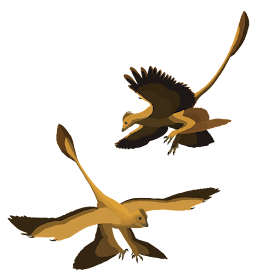
Apparently blogger resizes this to an extent that makes it unreadable, so
please click here to view.
This is a bit different from my usual fare, but still worth sharing. Recently I was idly curious about how common fruits are related to one another. Everyone can figure that berries are mostly related, for instance, and peaches and plums are probably related. But beyond that, the evolutionary relationships between fruits don't seem very intuitive. I tried finding a phylogenetic tree of this online, but couldn't find one. So, I spent a few hours researching and made my own.
My initial feeling that these relationships aren't very intuitive was proven correct. In fact, a lot of the relatedness I found seemed pretty bizarre to me, though I'm no botanist. I think the main reason for this strangeness is the power of human artificial selection, which has produced the vast majority of the plants found in this chart. We can do pretty crazy things to plants (and animals, just look at dogs) with a few thousand generations of selective breeding.
This isn't meant to be extremely scientific: I've divided the clades very simplistically, and the branch lengths aren't meant to represent divergence time. (I.e., no bootstrapping :p) I tried dividing them into monocots vs dicots when I first started, but quickly learned that these groups are paraphyletic. Plant systematics is messy as hell, and there are a huge number of "unranked" groups that I mostly didn't include here.
Also, this should be obvious, but not every fruit/vegetable/herb/nut in existence is represented here, just what I considered to be the largest or most important groups. For example, parsnips are very closely related to carrots, but I left them out because let's be honest, who the hell even knows what a parsnip is? I left out a lot of herbs and stuff too, because those just go on forever. At 1 MB, it's already big enough as it is.
Animal version coming eventually!
Photoshop CS4, February 2011.















 I haven't updated this blog for over a year, but I'm going to start try to do so regularly again. Here's the seventh book illustration. This is Sinosauropteryx, from the early Cretaceous of China's Liaoning. It is famous as being the first dinosaur found with fossilized feather impressions, and one of the most primitive. Its feathers were very simple, and would have been little more than furry down. It was thought that this animal's body covering may have been collagen fiber remains instead of feathers, but more recent analysis of its long tail - which shows an alternation of light and dark bands - shows that it was more likely to be primitive down.
I haven't updated this blog for over a year, but I'm going to start try to do so regularly again. Here's the seventh book illustration. This is Sinosauropteryx, from the early Cretaceous of China's Liaoning. It is famous as being the first dinosaur found with fossilized feather impressions, and one of the most primitive. Its feathers were very simple, and would have been little more than furry down. It was thought that this animal's body covering may have been collagen fiber remains instead of feathers, but more recent analysis of its long tail - which shows an alternation of light and dark bands - shows that it was more likely to be primitive down.